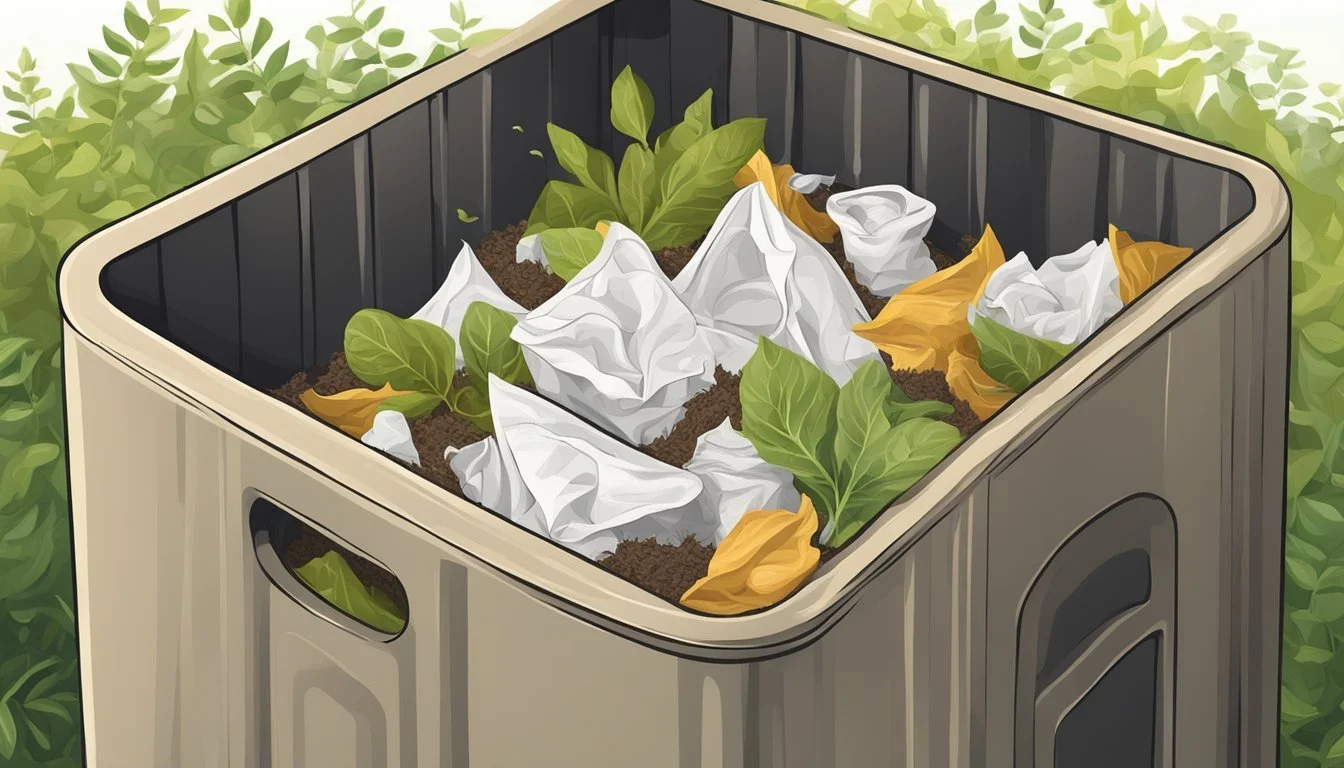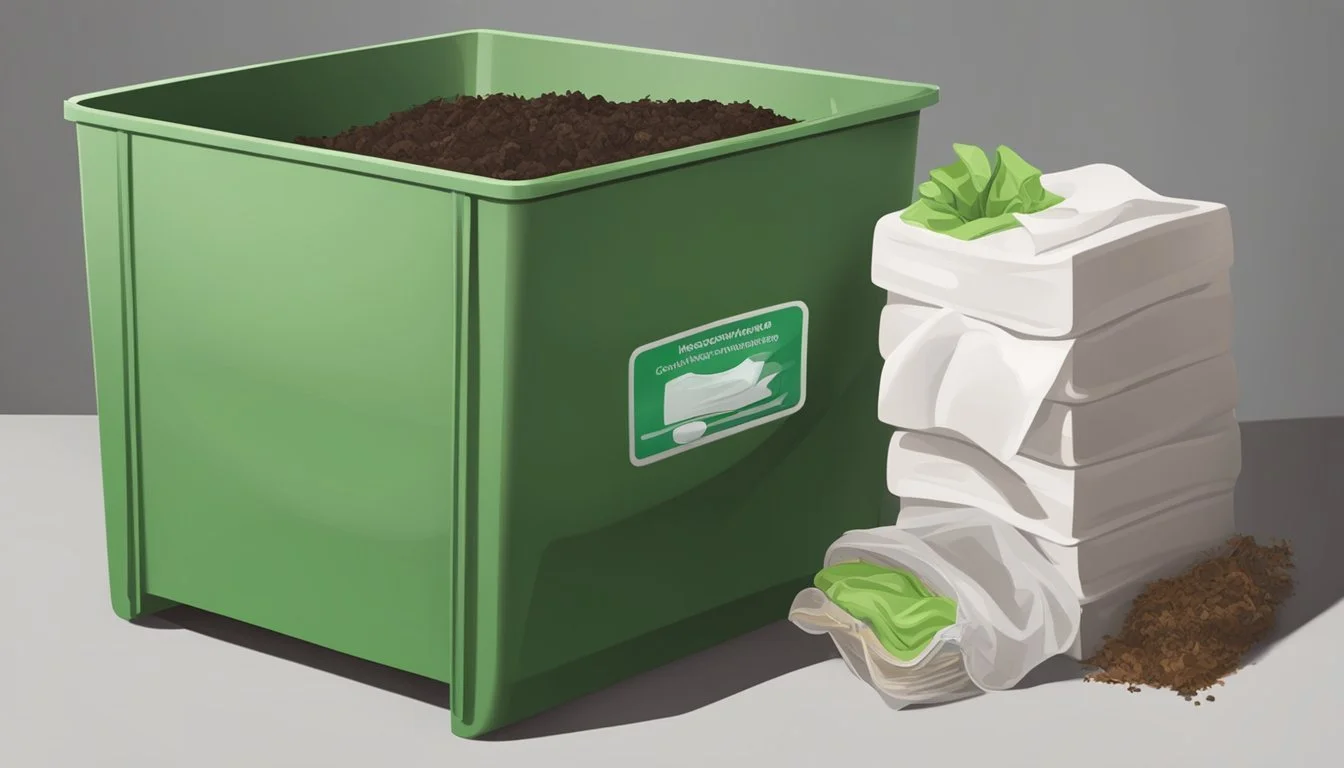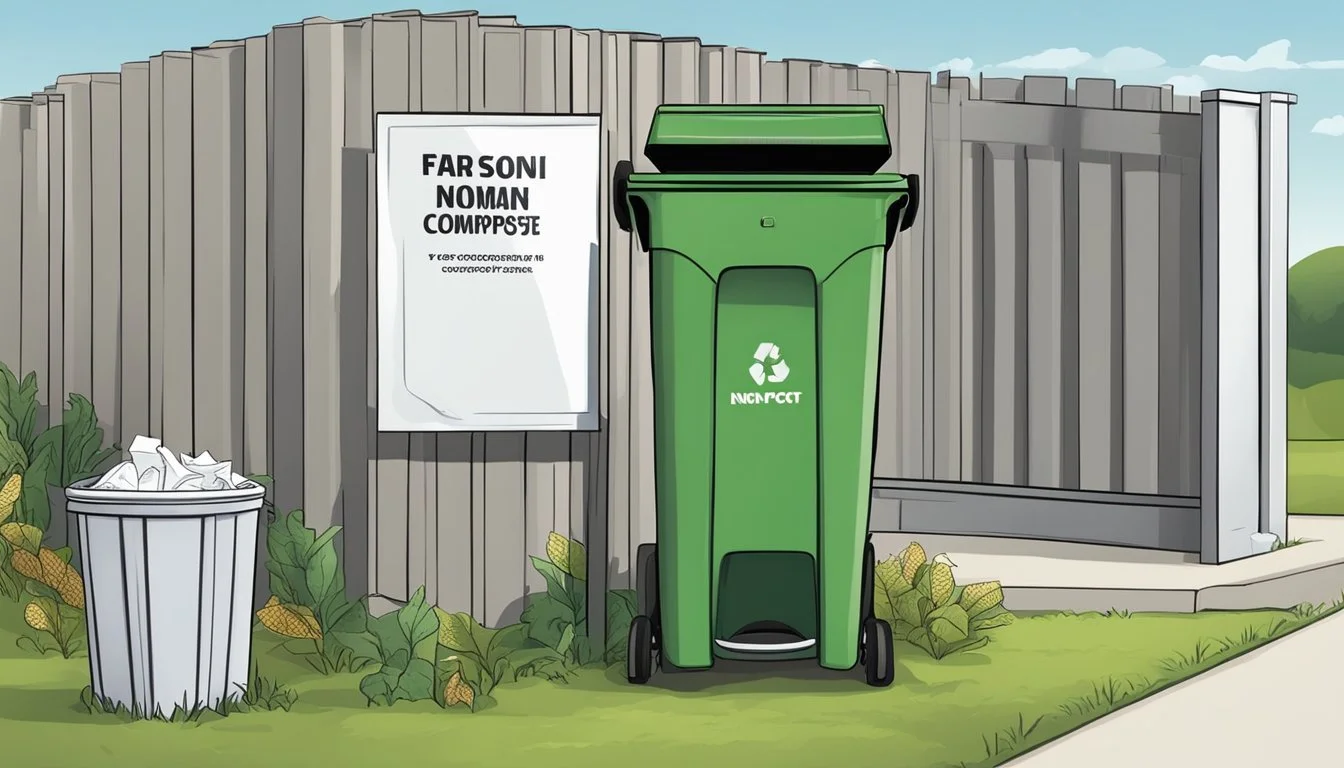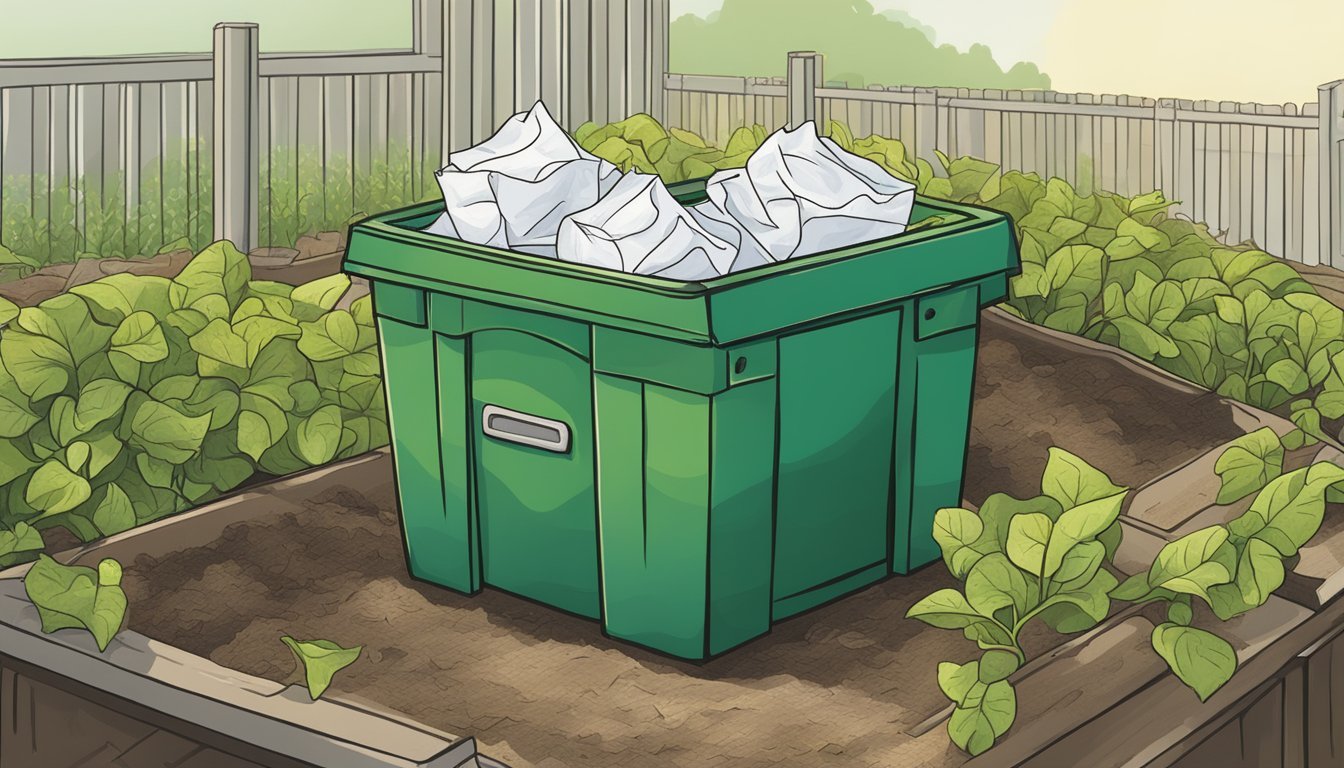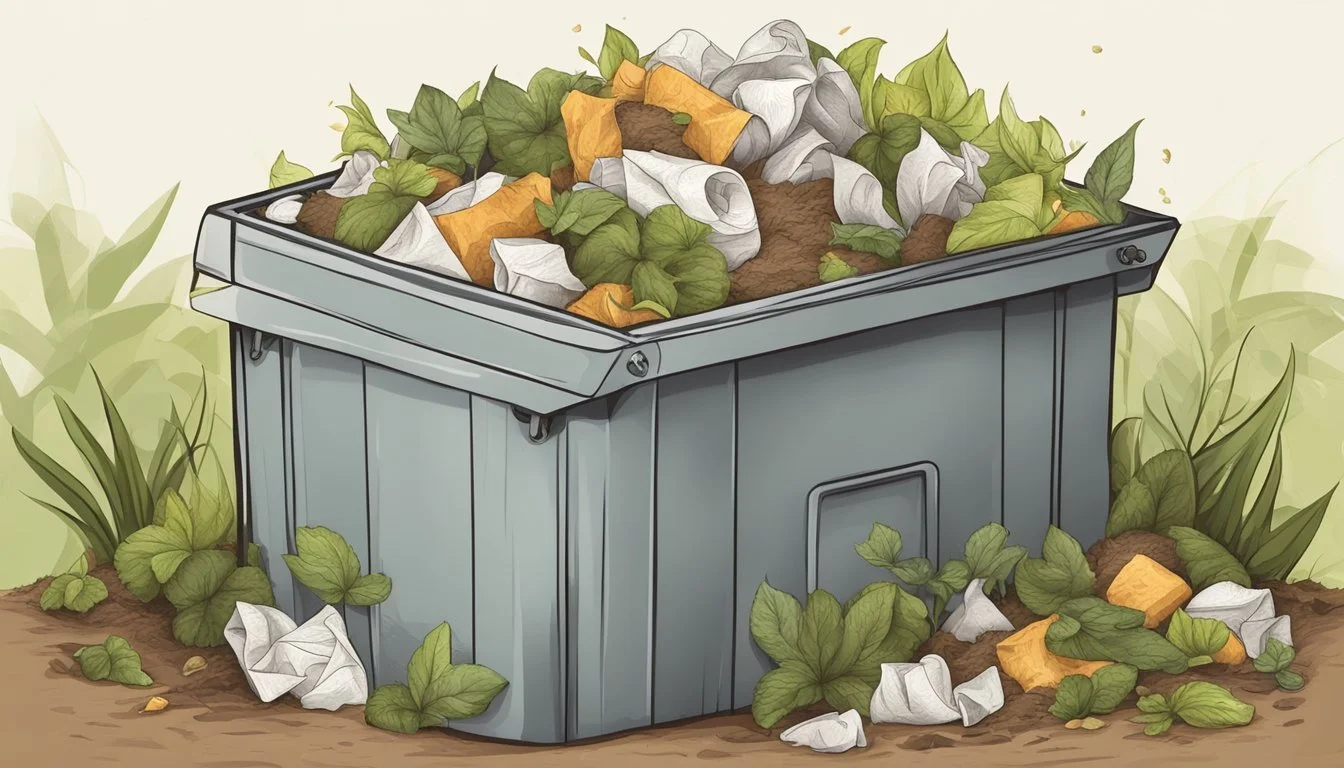Can You Compost Facial Tissues?
Understanding Biodegradability and Composting Practices
Composting is an effective method of recycling organic waste and turning it into a valuable resource for gardening and improving soil health. Among various household items, the question often arises whether facial tissues can be included in a composting regime. Facial tissues, the soft, disposable papers used for personal hygiene, are indeed compostable under the right conditions.
When it comes to composting facial tissues, the key consideration is their use prior to disposal. Clean tissues, or those only used with water or food products, can be added to compost bins. However, it's important to be mindful of tissues used for wiping noses or cleaning up substances that do not break down in compost, such as chemicals or oils. Moreover, tissues treated with lotions or other additives may not be suitable for composting as they potentially impede the composting process or introduce unwanted chemicals into the compost.
The environmental benefits of composting facial tissues include reducing waste sent to landfills and turning a potentially discardable item into a nutrient-rich amendment for soil. To ensure efficient decomposition, tearing the tissues into smaller pieces before adding them to the compost pile is recommended. This helps speed up the breakdown process and maintains a balanced compost by not overwhelming the system with large items that take longer to decompose.
Understanding Compost and Composting
Composting is a process that transforms organic matter into nutrient-rich soil, involving microorganisms, such as bacteria, and managing ratios of carbon to nitrogen. It stands as a sustainable disposal method, which is both eco-friendly and beneficial to the environment.
What Is Composting?
Composting is the natural breakdown of organic matter into compost, a soil-like substance rich in nutrients. It is carried out by microorganisms, primarily bacteria and fungi, and requires a balance of carbon-rich materials (browns) like dry leaves and wood chips, and nitrogen-rich materials (greens) such as food scraps and grass clippings. A healthy compost pile should have a mixture of these two types of materials to optimize the composting process.
The Importance of Composting for the Environment
Composting has significant environmental benefits. It reduces the amount of organic waste sent to landfills, thereby lessening methane emissions — a potent greenhouse gas. Compost adds vital nutrients back into the soil, improving soil health and reducing the need for chemical fertilizers. Additionally, it aids in moisture retention and can help prevent soil erosion, contributing to a more sustainable ecosystem overall.
Types of Compostable Materials
The range of materials that can be composted is extensive and includes:
Kitchen scraps: Fruits, vegetables, eggshells, coffee grounds, and tea bags represent nitrogen-rich materials.
Yard waste: Leaves, grass, and plant trimmings provide necessary carbon.
Paper products: Uncoated paper towels, napkins, and cardboard, which are made of natural fibers, are biodegradable and compostable.
Notably, clean facial tissues fall under the category of compostable paper products, but should be free from contaminants like grease or chemicals to prevent any negative impact on the compost pile and ultimately the environment.
Facial Tissues and Compostability
In addressing the sustainability of facial tissues, it's essential to consider their compostability, challenges they might present in the composting process, and alternative practices that may be more sustainable.
Can You Compost Facial Tissues?
Facial tissues, composed of paper fibers, can be included in a compost pile where they will biodegrade. Plain tissues without any contaminants are generally compostable. However, if they've been used with oils, chemicals, or to blow a nose when sick, which could introduce harmful pathogens, composting is not recommended to avoid the risk of contamination.
Challenges in Composting Facial Tissues
Composting facial tissues may present challenges, mainly concerning health safety and the composting environment. Used tissues may contain viruses and germs, posing a risk when added to a compost heap. Recycling facilities typically do not accept facial tissues for recycling due to contamination concerns and their low-quality fibers being unsuitable for the recycling process.
Facial Tissue Alternatives and Sustainable Practices
Sustainable practices include using a handkerchief made of cloth, which can be washed and reused. For those committed to composting, opting for eco-friendly tissues that are specifically marked as compostable is advised. For those who do not have a disease and have not used their tissues with synthetic chemicals or oils, composting is a viable option, though one should always consult their local composting guidelines.
Composting Techniques and Considerations
Facial tissue composting requires an understanding of composting practices and an awareness of the decomposition process. It's essential to consider the type of composting method, as well as the balance of bacteria, air, and water to successfully break down tissues into organic matter.
Backyard Composting
In a backyard compost system, facial tissues can be added as part of the carbon-rich 'browns'. To aid decomposition:
Shred tissues into smaller pieces to prevent clumping.
Maintain a balance between 'greens' (nitrogen-rich materials) and 'browns' to foster effective bacterial activity.
Ensure adequate aeration and moisture levels to support the composting process while avoiding excess water, which can lead to a lack of oxygen and odors.
Key Components:
Bacteria: Thrive in a balanced environment and facilitate the break down of organic matter.
Compost Pile: Should be turned regularly to incorporate air.
Bokashi Composting
Bokashi composting, an anaerobic process, uses a special bokashi bran that contains microorganisms to ferment organic waste, including tissues.
Place tissues into a Bokashi bucket layered with bokashi bran.
Seal tightly between additions to maintain an anaerobic environment for the fermentation process.
After fermentation, the by-product can be buried in a garden or added to a traditional compost pile to fully break down.
Key Elements:
Bokashi Compost Accelerator: Enhances fermentation and decomposition.
Air (lack thereof): Important to keep the bucket sealed for effective fermentation.
Drop-Off and City Collection Programs
Drop-off composting and city collection programs offer centralized facilities where individuals can deposit tissues and other compostable materials.
Check local guidelines to confirm that tissues are accepted at drop-off sites or in the city’s organic collection bin.
Facilities handle the composting process, often employing large-scale operations that can manage a variety of organic waste.
Considerations:
Garbage vs. Compost: Avoid contaminating compost with non-compostable garbage.
Facilities: May have specific requirements for the condition of tissues accepted (e.g., not contaminated with chemicals or disease pathogens).
Health and Safety Considerations in Composting
Composting is an effective way to turn household waste into valuable soil amendment, but it requires careful management to prevent the spread of harmful pathogens and to ensure the compost pile remains healthy.
Pathogens and Disease Control
When composting facial tissues, one must consider the potential for spreading disease. Tissues used during an illness, such as a cold or flu, may contain pathogens that are harmful to humans and animals. Disease control in composting is critical; one should not compost tissues soiled with body fluids from someone who is sick, as they could harbor germs capable of causing infections. If an individual is healthy, tissues used to wipe away water or food residue may be considered safe for composting; nonetheless, caution is advised to avoid adding material that may spread disease.
Maintaining a Healthy Compost Pile
Maintaining a balanced compost pile is essential for effective decomposition and pathogen management. The pile should have a good mix of carbon-rich materials, like dried leaves or newspaper, and nitrogen sources, such as food scraps. The materials should be kept moist but not overly wet, as excessive moisture can harbor germs. Regular aeration is needed to supply oxygen that supports the microorganisms which decompose the waste. Ensuring proper air circulation and temperature can aid in killing harmful pathogens, creating a compost pile that is both productive and safe.
Recycling and Disposal of Non-Compostable Materials
Facial tissues, due to their usage and material properties, often cannot be recycled and require specific disposal methods to minimize environmental impact.
Recycling Options for Facial Tissues
Unfortunately, facial tissues are typically not accepted in standard recycling programs due to contamination with organic waste, making them inappropriate for the recycling bin. To avoid contamination in the recycling process, it is crucial only to recycle clean, uncontaminated paper products. Since facial tissues are frequently used for personal hygiene, they tend to contain materials like mucus, grease, or make-up, which can disrupt the recycling process. Consequently, recycling facilities often exclude facial tissues from acceptable items.
Cities may have localized programs that can handle a broader range of recyclable materials; however, these programs are not the norm. For the most part, when it comes to facial tissues, it is typically better to consider composting clean ones or disposing of used tissues as garbage.
Disposal of Non-Compostable Waste
When composting is not an option, disposing of non-compostable tissues needs to be done responsibly. Landfills should be a last resort due to their environmental impact. In the absence of a recycling or composting alternative, facial tissues should be placed in the trash. Individuals are encouraged to minimize the use of disposable tissues to reduce the volume of waste. In the case of items that cannot avoid going to the landfill, it's advised to at least ensure they are contained to prevent litter and harm to wildlife.
Utilizing reusable alternatives or ensuring that only necessary amounts of facial tissues are used can also help reduce the overall quantity of plastic wrapping and garbage generated, leading to a more sustainable disposal practice. The goal is to mitigate the ecological footprint by reducing material sent to landfills and other waste management systems.
Environmental Impact and Benefits
Composting facial tissues is an eco-friendly practice that contributes to waste reduction and decreased environmental impact. It represents a sustainable disposal method that can benefit both the environment and society.
Reducing Landfill Waste
Composting facial tissues significantly reduces the amount of waste ending up in landfills. Facial tissues are primarily made from paper, a biodegradable material that breaks down naturally in compost. By diverting these tissues from landfills, compost initiatives lessen the accumulation of non-degradable material, leading to:
A decrease in landfill mass
Prevention of methane release, a potent greenhouse gas
Conservation of natural space
Energy Savings and Carbon Footprint
The process of composting requires less energy compared to recycling or the production of new paper products, contributing to overall energy savings. Furthermore, by enabling the decomposition of paper fibers through natural processes, composting helps in reducing carbon emissions associated with waste management. This leads to:
A lower carbon footprint for waste disposal
The promotion of eco-friendly practices
The creation of a nutrient-rich amendment for soil, which can enhance plant growth and sequester carbon
Practical Tips for Home Composting
Composting facial tissues and other organic material can be a straightforward process. This section aims to provide concrete advice on establishing and managing a compost pile effectively.
Starting Your Compost Pile
To begin a backyard compost, one should designate a suitable area in the yard and create a simple pile or use a regular compost bin to contain the organic material. Adding a balance of carbon-rich materials, like dry leaves and paper products, including clean facial tissues, with nitrogen-rich substances, such as kitchen scraps and coffee grounds, is essential. Here's an initial setup guide:
Selecting a Site: Choose a dry, shady spot near a water source.
Layering: Start with a thick layer of coarse material (e.g., twigs) to improve aeration.
Adding Materials: Alternate layers of carbon-rich and nitrogen-rich materials.
Size: Aim for a pile that is at least 3 feet in diameter and height to generate sufficient heat.
Optimizing the Composting Process
To transform your household waste into nutrition-rich soil, it's critical to ensure the pile maintains proper moisture and air circulation. Moisture should be like a wrung-out sponge—moist, but not soaked. Bokashi composting, a method involving a specific compost accelerator, can be used for materials that are slower to decompose or might attract pests, like meat or cheeses. Here are tips for optimizing your compost:
Turning: Aerating the pile every week or two ensures even decomposition.
Size of Materials: Smaller pieces decompose faster, so shred materials if possible.
Balance: Maintain a balance between green and brown materials; roughly equal by volume.
Compost Accelerator: A compost accelerator or homemade activator (e.g., comfrey leaves) can speed up the process.
Monitor: Keep an eye on temperature and moisture levels, adjusting as needed.
By adhering to these practices, one can maintain an efficient backyard compost that converts tissues and other household waste into beneficial compost, without the need for specialized equipment.
Common Questions and Misconceptions
When considering the compostability of facial tissues, the specifics of their conditions and manufacturing process directly affect whether they should be composted.
Can Oily or Makeup Soiled Tissues Be Composted?
No, tissues soiled with oil, makeup, or other chemicals should not be composted. The presence of these substances can lead to contamination in the compost pile. Oily substances in particular slow down the composting process, and makeup might contain non-biodegradable elements that could harm the environment.
Are All Paper Tissues Created Equal for Composting?
Not all paper tissues are equally suitable for composting. Unbleached tissues are generally more compostable as they don't introduce potentially harmful chemicals to the compost. Bleached tissues, such as those belonging to some brands like Kleenex, may contain chemicals that are best kept out of compost to prevent any risk of contaminating the soil. It is always recommended to use unbleached, undyed, and 100% paper tissues for composting to ensure the breakdown process aids in soil enrichment without negative side effects.


